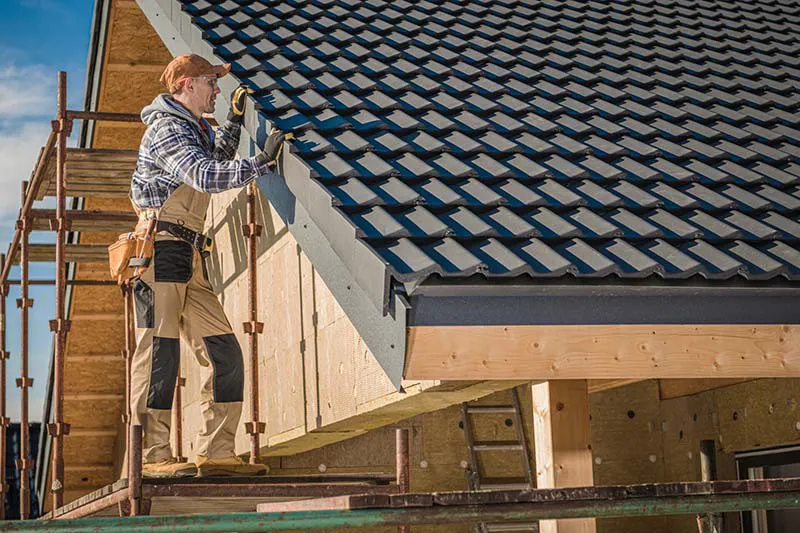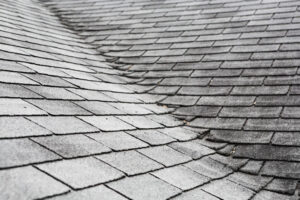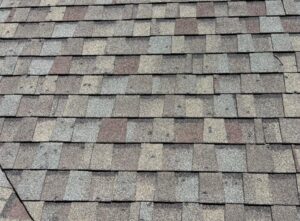Your residential roofing color greatly impacts your home’s curb appeal and can also affect resale value. Choosing the right color depends on a number of factors, like the architectural style of your home, neighborhood regulations, climate, and siding.
With so many color options available, it can feel overwhelming. That is why chatting with a professional company is a good idea. They can explain the materials, colors, and textures available and which would best suit your home. Not only that, but a professional company will understand market trends and help you make a wise color investment.
Why is Residential Roofing Color Important?
Curb appeal is one of the biggest considerations when it comes to residential roofing color. When your roof color compliments your home, it increases attractiveness and can increase the value of your home.
Pro Tip: Stay within the same color family to create a cohesive aesthetic.
Consider Architectural Style and Your Home Exterior
Different style homes have different color palettes.
For example, traditional homes often use neutral colors like gray, brown, and black. Contemporary homes are known for bolder color choices and clean aesthetics like gray, white, and blue. In comparison, craftsman or bungalow styles use earthy tones and roofing that mimic natural materials like wood or slate. Mediterranean or Spanish-style houses tend towards vibrant and warm color palettes like terracotta, clay, and warm beige that pair well with stucco walls. Victorian homes often have intricate details and bolder colors like deep reds and forest greens.
Your home exterior is another important consideration when choosing a residential roofing color. Whether you have siding, brick, stucco, or stone, your roof color should contrast and complement the exterior of your home. Consider the undertones, taking care to balance warm and cool tones.
Pro Tip: Compare roofing material samples against your exterior at different times of the day. That way, you can see how it looks under other lighting conditions.
Consider Architectural Style and Your Home Exterior
Different style homes have different color palettes.
For example, traditional homes often use neutral colors like gray, brown, and black. Contemporary homes are known for bolder color choices and clean aesthetics like gray, white, and blue. In comparison, craftsman or bungalow styles use earthy tones and roofing that mimic natural materials like wood or slate. Mediterranean or Spanish-style houses tend towards vibrant and warm color palettes like terracotta, clay, and warm beige that pair well with stucco walls. Victorian homes often have intricate details and bolder colors like deep reds and forest greens.
Your home exterior is another important consideration when choosing a residential roofing color. Whether you have siding, brick, stucco, or stone, your roof color should contrast and complement the exterior of your home. Consider the undertones, taking care to balance warm and cool tones.
Pro Tip: Compare roofing material samples against your exterior at different times of the day. That way, you can see how it looks under other lighting conditions.
Climate and Neighborhood Regulations
The color of your roofing material can also affect the amount of sunlight and heat the roof absorbs. Lighter-colored roofs, such as white or light gray, reflect more sunlight and heat, keeping the home cooler in warm climates. This can help reduce the cooling load on the HVAC system, lower energy consumption, and help with energy efficiency. But that doesn’t mean dark colors aren’t an option. The Roofing Center is certified with Owens Corning, and they have dark composite roofing specifically designed to reflect more sunlight and absorb less heat.
Blue is one of the most popular cool colors. For example, a light gray roof pairs well with deep blue siding, while a slate roof works well with cool blue siding. Warm colors like yellow, red, tan, and brown complement neutral roofs and provide contrast for darker roofs.
Some neighborhoods also have regulations regarding home styles and colors. Check with your local homeowners’ association for specific rules and chat with a local professional contractor who understands the preferred color scheme of an area.
Let The Roofing Center Help You Choose the Best Residential Roofing Color For Your Home
A roof replacement is overwhelming, especially when considering the different styles, textures, and colors you must choose from.
Not only do we have the expertise to guide from a technical standpoint, but we also know what colors will work with your home and neighborhood. With over 35 years of industry experience, we have worked on almost every home style. We also cater specifically to the intermountain area and understand what colors work best for the region and climate.
So, if you are unsure what residential roofing color is best for your home, contact us to schedule an appointment.







